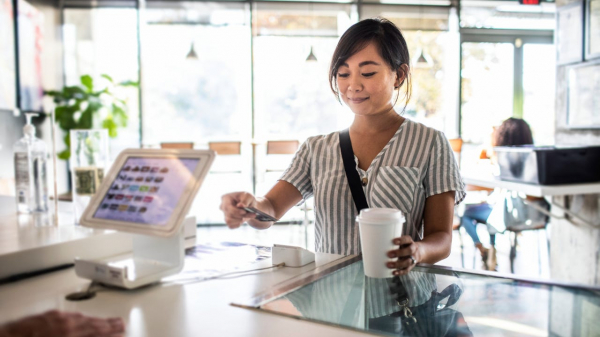
Adoption of mobile wallets for transition to cashless transactions Alas, as the use of these payment methods increases, scammers are also looking to get some of the action.
According to the Consumer Financial Protection Bureau, Consumers have filed multiple complaints about fraud related to mobile wallets. In fact, the CFPB reports that nearly half of all complaints about money services received in 2021 will be about mobile wallets. Consumers' main concern was falling victim to fraudulent activity on their mobile wallets.
Contents
What is a digital wallet?
What is a digital wallet anyway? to store credit card, debit card, and other financial information. Instead of loading all your physical cards into your wallet, use your digital wallet to make payments.
For example, when checking out in a store, you use merchant contactless checkout to tap your mobile phone or other device to activate digital wallet payments. To make this payment, activate a payment method, such as a specific credit card, that you have stored in your digital wallet.
You will also need some way to authenticate the payment, such as a PIN code or biometric entry. No actual card information is sent, providing a layer of security from hackers.
Don't fall victim to fraud
Apps like Venmo and Zelle can help you pay others. For example, after a meal with friends, you can use such products to share the cost. Because of their convenience, digital wallets have become popular targets for scammers.
Linking your credit card to your digital wallet, rather than your debit card, provides additional protection. For example, credit card issuers have policies to limit or prevent losses. On the other hand, linking a debit card is less likely to limit losses. The scammers will then be able to access the funds from your bank account, so you will need to link your credit card to your digital wallet.
How Scammers Target Digital Wallets
Fraudulent Payment Communications
Scammers can send messages to your digital wallet stating that you made a mistake and You may request a refund. The money appears in your wallet, but scammers usually link stolen credit cards to your wallet to make payments. When you transfer money, the stolen card will be unlinked and your own card details will be linked. You can see that the stolen card transactions have been reversed by the bank and the funds have been debited from the account.
Pretends to be customer support to obtain credentials
Criminals impersonate company employees and send links in emails or text messages so that they can be compromised. They may attempt to redirect you to a site that provides digital wallet information.
Pretending to be a Buyer
If they are selling something, they can represent themselves as a buyer and make payments using a digital wallet linked to a stolen credit card. The card issuer will reverse the transaction once the actual cardholder becomes aware of it. In that case, you lose your money and sell your item.
Pretend to be a friend or family member in need
Sometimes you suddenly hear from a friend or family member that they need money urgently. Scammers hope that you will heed this urgent request for funds and look to your digital wallet without first checking into your social circles.
Pretending to be a government official
Scammers are
Preventing Mobile Wallet Fraud
Here are the steps:
- Always use caution when providing digital wallet information to anyone claiming to support your company.
- You can install it. Install an app on your smartphone that allows you to find your phone if it is lost, lock your phone so others cannot access it, or erase sensitive mobile girlfriend wallet information from your phone.
- Please do not download the app. Or software intended for payment support
- Before you send money to someone in your network, check in with that person to make sure it's a legitimate request.
- Do not publish personal information on Social Her media that may help scammers provide information to defraud you.
- You can set up her mobile phone for two-factor authentication so that you have to complete an extra layer of verification when signing on to your digital wallet.
- Don't use a digital wallet. Phone calls over public Wi-Fi that can be intercepted by criminals.
- Record your mobile device information (manufacturer, serial number, device identification number, etc.) so that you can identify it if it is lost.
- Make sure there are no discrepancies in your financial accounts. .
li>
What to do if you're a victim of mobile fraud
Payment apps themselves don't have robust user protection policies, so you'll have to rely on them . Protection provided by your bank or credit card issuer.
According to the CFPB, a consumer contacted the payment app customer his support and found that the fraudulent transfer could not be reversed due to the way the app was designed, and that the customer was left with their own security. There was an answer that they were responsible for
If you have experienced mobile wallet fraud, you should follow up with regulators.You can file a complaint with the CFPB or the Federal Trade Commission. You can also file a report with the Federal Bureau of Investigation's Internet Crime Complaint Center and follow up with your bank.
Conclusion
With the increasing use of digital wallets, fraudsters have found another avenue to conduct their transactions. Be careful when using , be careful with people you don't know, and check before you send money. You need to link a credit card, not a debit card, to your mobile wallet. If you are a victim of mobile wallet fraud, file a complaint with your regulator and follow up with your bank.